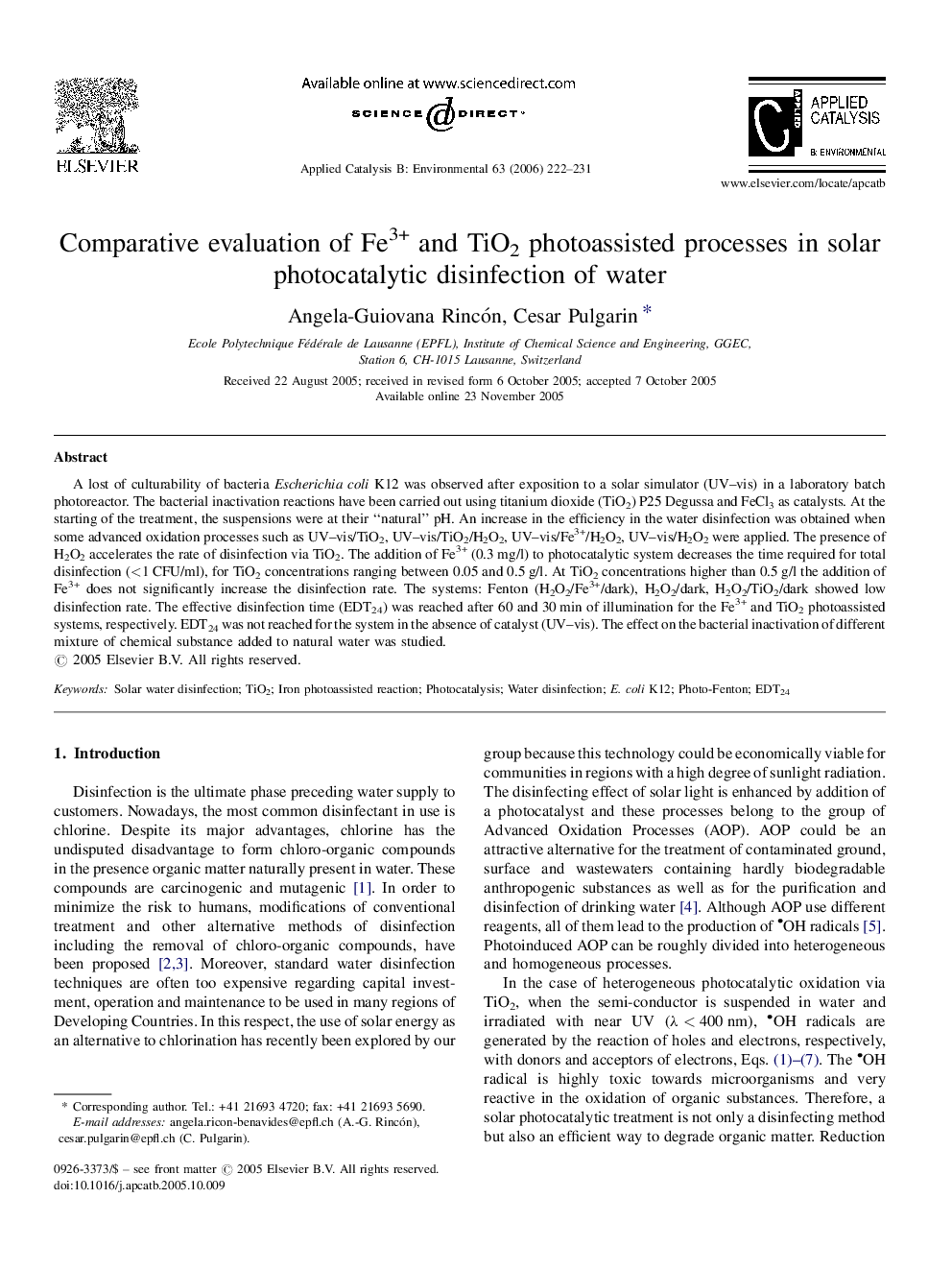| Article ID | Journal | Published Year | Pages | File Type |
|---|---|---|---|---|
| 48882 | Applied Catalysis B: Environmental | 2006 | 10 Pages |
A lost of culturability of bacteria Escherichia coli K12 was observed after exposition to a solar simulator (UV–vis) in a laboratory batch photoreactor. The bacterial inactivation reactions have been carried out using titanium dioxide (TiO2) P25 Degussa and FeCl3 as catalysts. At the starting of the treatment, the suspensions were at their “natural” pH. An increase in the efficiency in the water disinfection was obtained when some advanced oxidation processes such as UV–vis/TiO2, UV–vis/TiO2/H2O2, UV–vis/Fe3+/H2O2, UV–vis/H2O2 were applied. The presence of H2O2 accelerates the rate of disinfection via TiO2. The addition of Fe3+ (0.3 mg/l) to photocatalytic system decreases the time required for total disinfection (<1 CFU/ml), for TiO2 concentrations ranging between 0.05 and 0.5 g/l. At TiO2 concentrations higher than 0.5 g/l the addition of Fe3+ does not significantly increase the disinfection rate. The systems: Fenton (H2O2/Fe3+/dark), H2O2/dark, H2O2/TiO2/dark showed low disinfection rate. The effective disinfection time (EDT24) was reached after 60 and 30 min of illumination for the Fe3+ and TiO2 photoassisted systems, respectively. EDT24 was not reached for the system in the absence of catalyst (UV–vis). The effect on the bacterial inactivation of different mixture of chemical substance added to natural water was studied.
